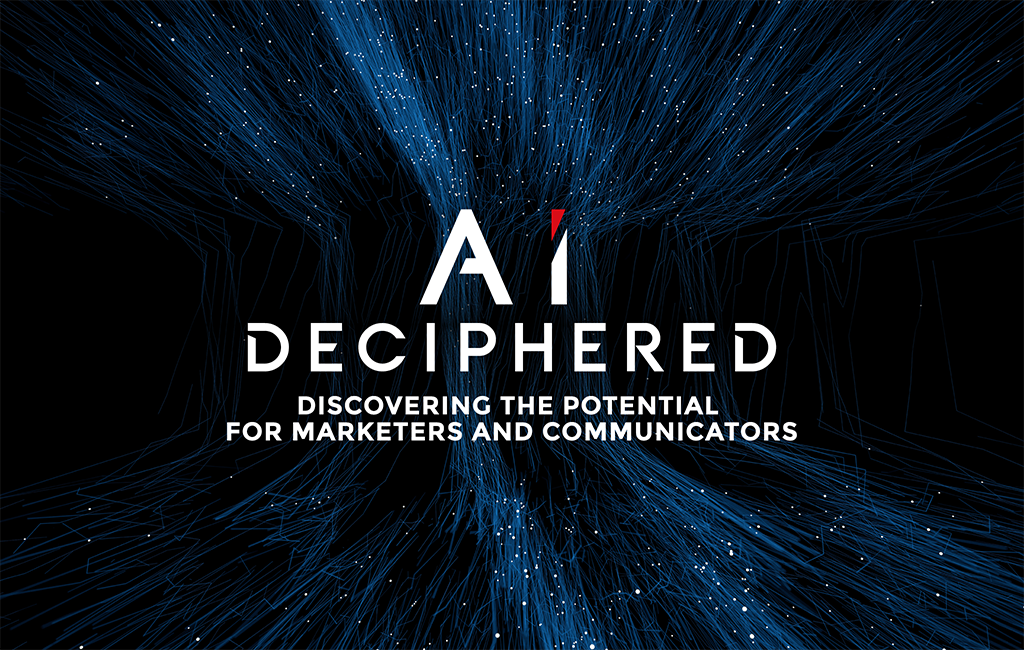In today’s fast-evolving medical marketing landscape, artificial intelligence (AI) is transforming how strategies are developed, and campaigns are executed. As more medical device and pharmaceutical companies bring their creative work in-house, one key question emerges: What is the future of media agencies? Where do strategy and creativity fit in a world where AI can generate content at scale? Can AI replace human ingenuity, or does it serve as a tool to amplify creativity?
At a recent panel at AI Deciphered sponsored by The Matchstick Group, Melissa Wildstein, founder and president of The Matchstick Group, moderated a discussion between Justin Fineberg, CEO and founder of Cassidy.ai; Diego Lomanto, chief marketing officer of Writer; and Alex Flores, VP of technology and AI integration at The Matchstick Group. The panel explored how generative AI is reshaping the landscape of strategy and creativity.
Enhancing creativity with AI
AI has the potential to enhance and support creativity in medical marketing. It helps manage and streamline marketing and creative processes, while also enabling scalability. “We can ensure that large organizations get their campaigns out in the proper way,” Lomanto explained. “On the iterative side, we can help you take any material and create infinite variations.”
Common use cases include creating derivative campaigns from a core asset, maintaining regulatory and brand compliance, and embedding AI into daily workflows. For example, Cassidy.ai uses AI to automate competitor analysis, scraping websites and gleaning insights. Yet, the human role in interpreting these insights remains essential. “AI is just another tool,” Fineberg said. “It’s how you use it that matters. That’s where human strategy and creativity come into play.”
Lomanto emphasized that humans are key to creating “the ideas that bring a brand to life.” He added, “AI is great at surfacing insights and generating ideas, but that ‘aha’ moment—the spark of creativity—comes from people.”
Marketers should consider AI for unique use cases. “Innovators will use these tools in ways that cut through the noise,” Fineberg noted. “Anyone can generate infinite content at scale. The edge comes from implementing unique strategies that stand out.”
Developing an AI-creative culture
To foster creativity, it’s important to develop a culture around AI experimentation. The Matchstick Group held a series of lunch-and-learns for mass learning, followed by smaller group discussions. “We worked hard to demystify AI and get the team comfortable using it,” Flores said. “It shifted from being an optional tool to a part of our workflow.”
As the company embraced AI, the culture became more collaborative. “I started exploring AI out of curiosity, but now the team is using it, teaching each other and even teaching me,” Flores shared.
AI’s role in strategy and execution
AI excels at adapting content designed for one purpose and repurposing it for another. For example, a brand used AI to align its inbound and outbound marketing strategy. After creating a white paper for inbound marketing, AI helped generate assets for outbound sales efforts, leading to a 35% increase in response rates.
“We believe the consistent messaging played a key role,” Lomanto said. “It sounds simple, but often, inbound and outbound teams aren’t aligned.”
In another case, The Matchstick Group used AI to create personalized content for a healthcare client with a limited budget. “We used AI tools like ChatGPT and Midjourney to produce images and assets for conferences and collateral,” Flores said. “The client saved a significant amount, nearly half of its budget, which would have otherwise gone toward a photo shoot.”
The possibilities for using AI tools are vast. Cassidy.ai, for instance, creates over 100 pieces of content each week. “We’re leveraging workflows to summarize news, generate content, and get approvals,” Fineberg explained. “The only limit is your imagination.”
Balancing AI and human insight
As AI continues to advance, companies must adapt. “We can’t stop the wave, but we need to guide and help companies deploy and manage AI,” Lomanto said.
Even as AI automates processes, human involvement remains crucial for strategic decision-making. “AI can provide several options, but the human role is to make the right choice,” Flores said. “Strategic recommendations come from evaluating what AI presents, based on knowledge that AI doesn’t have.”
To successfully integrate AI, Fineberg emphasized the importance of grassroots adoption: “Get AI into the hands of your people and see what they come up with. Adoption and innovation will come from the bottom up.”
As AI becomes more ingrained in marketing strategies, it’s vital not to lose sight of the human element. “Humans are still the most important part of the value chain,” Flores concluded.
thematchstickgroup.com





